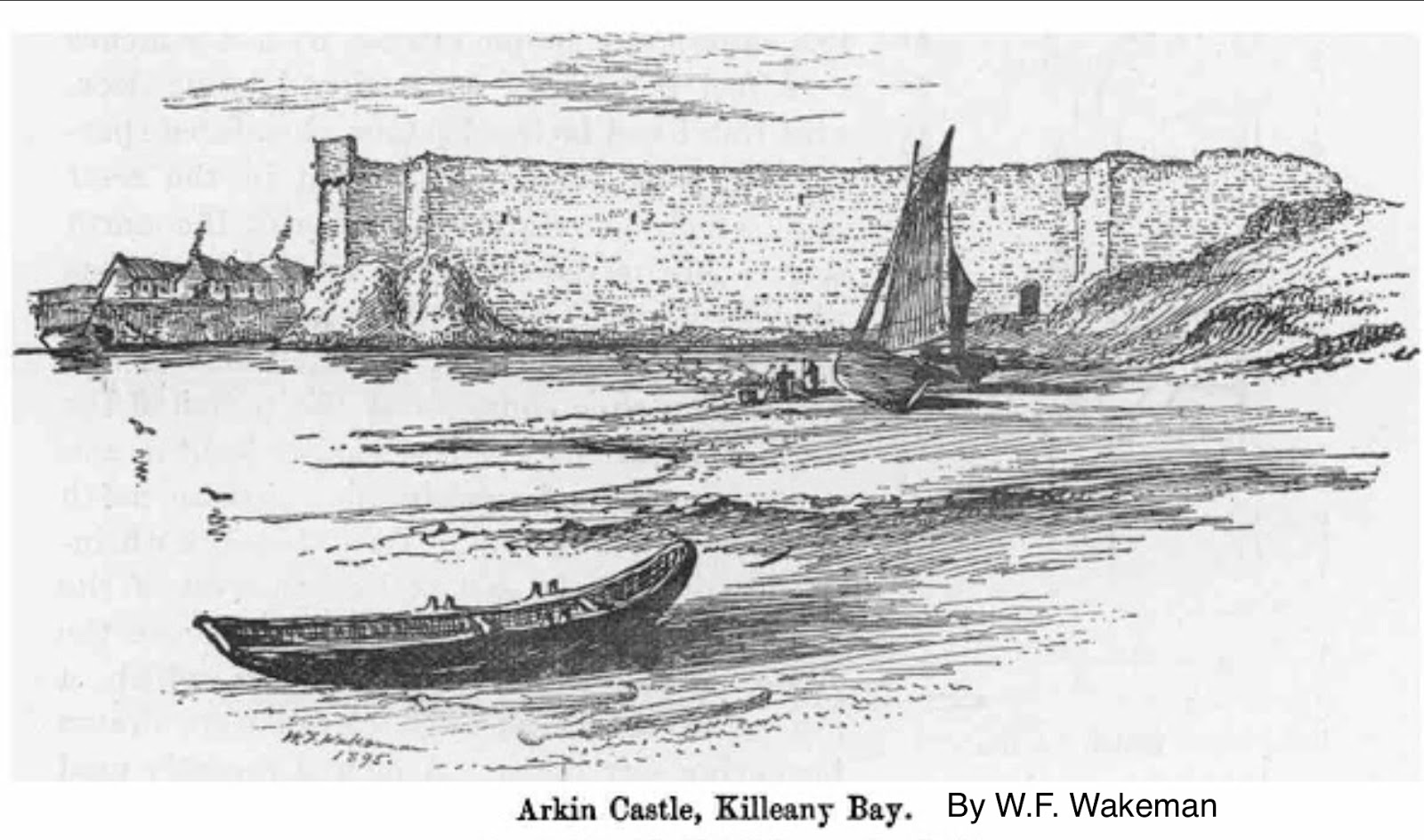
- August 7, 2023
While exhibiting the Boyne currach at the Galway festival this year, a man from An Spidéal quizzed me about an illustration he found while browsing the internet. I recognised the name under it as WF Wakeman. Wakeman was a travel writer from around the 1850s who spent a lifetime documenting the highways and byways of Ireland throughout and after the Great Famine. The drawing itself was done beside Arkin Castle (Caisleáin Aircín) on Aran Mór, Co Galway in 1857. He first travelled to the Aran Islands with John O’Donovan in 1837 at the age of 17, and thus began his great interest in the structure of the traditional currach. The man I just met who possessed the illustration had just completed an Aran currach himself and was at pains to compare the traditional boat he had made, with Wakeman’s version that he had drawn beneath one of Cromwell’s castles.
Firstly, Wakeman’s boat only had a single gunnel, similar to those found in the more northern regions of the country. Secondly, I notice (and I could be mistaken) that the bow is not pointed, but more rounded with possible woven strokes representing a wicker craft rather than the wooden ribs now used. Hornell records Hartshorne in his book ‘The Conquest of the North Atlantic’, published in 1853, stating that the currachs of the Aran Islands were still covered with animal hides around then. And finally, two rough lee boards lie in front of the boat indicating a sail may have been used.
All in all, it’s a great illustration and I look forward to getting the magnifying glass out to have a better look for a mast foot of some kind. Recently published colour photos of men landing fish from Tory Island at Downing Pier, Rosapenna, Co Donegal shows a fleet of 5 wicker currachs, two of which have masts and sails to boot and hidden behind a traditional wooden Drontheim. These can be seen in the infamous book Irish Folklore and are well worth a look.
But back to Wakeman….
His sketches are ok to be shown as the copyright has long since expired.
The second ever drawings of the Boyne Currach were also done for WF Wakeman in 1848 above a famous weir close to Navan, Co Meath. His third illustration that I know of, was done beneath the Battle of the Boyne monument of 1690, the location where the last Boyne Currachs ever fished.
The fourth account he gave was in Drogheda and he writes ‘Ireland represents some curious contrasts. For instance, upon one side of the bridge of Drogheda may be seen steamboats in all their luxurious completeness. On the other the currach, such as was probably in use amongst the builders of the cairns and cromleacs of Brú na Boinne.’ The fifth sketch that I know of is again in 1852 where he comments, ‘The Turf boats which here in Athlone dot the river are the rudest species of craft, except for the currachs formed with wattle covered in cowhide and are common above Lough Ree.’
It must have been hard to sit and draw antiquities when 8 million people were either dying or on the move. Perhaps Britain welcomed some good news from across the pond as a distraction to only hearing about McClintock’s search for Franklin’s failed Arctic expedition or the impending war about to break out in the Crimea. That saw 500,000 soldiers dead, 7000 of whom were Irish.
Slán, Currach abú!
